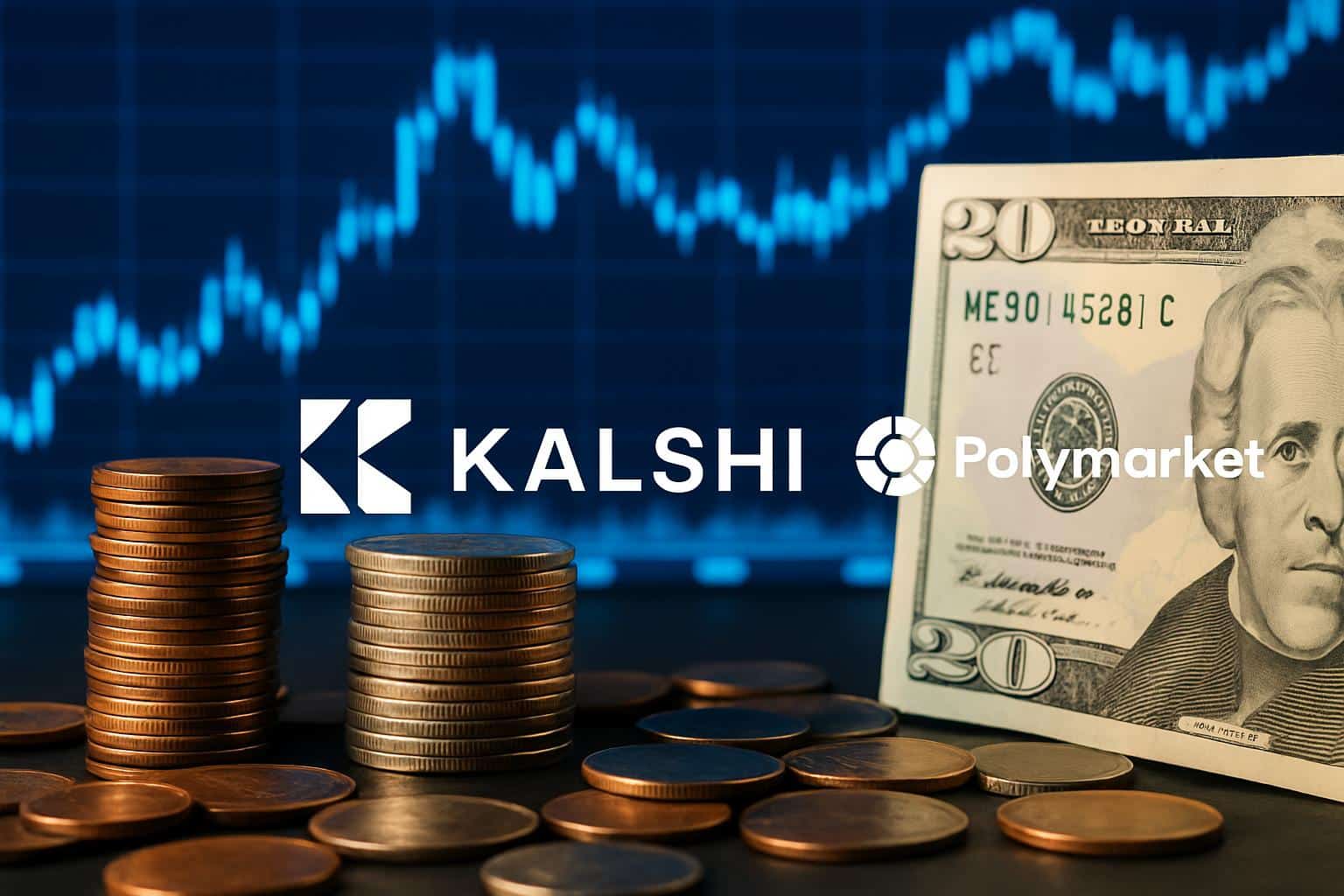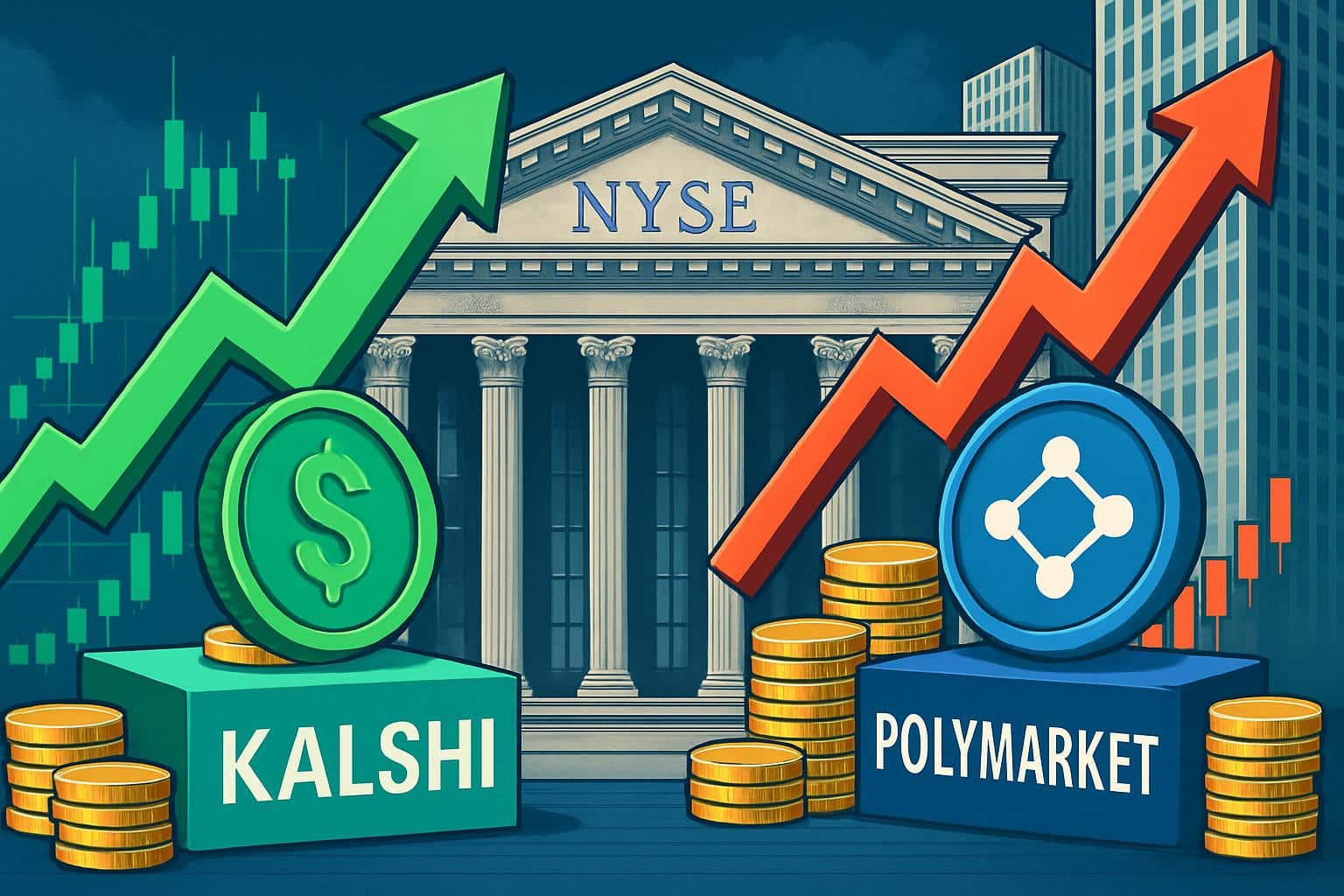Operator Kalshi, which operates a prediction market platform, has raised over $300 million in new financing at a valuation of $5 billion, according to people familiar with the matter. This comes as direct competitor Polymarket secured up to $2 billion in support from rival Intercontinental Exchange, the owner of the New York Stock Exchange, at a separately announced pre-money valuation of $8 billion. The dual rounds highlight how event-driven trading is going mainstream in finance, long seen as a niche curiosity.
Funding Round Indicates Aggressive Scale-Up
Kalshi’s latest round was co-led by Sequoia Capital and Andreessen Horowitz, along with participation from Paradigm, CapitalG and Coinbase Ventures, people who knew about the deal said. The valuation also represents more than a doubling of the price tag that the company fetched just about one quarter ago, and it’s reflective of momentum investors see in regulated event contracts as well as in Kalshi’s ability to onboard new markets fast.

The firm also claimed its platform now reaches customers in 140 countries, facilitating an uptick in liquidity and allowing different topics to command volume. But while headline valuation captures headlines, the more significant milestone is trading volume: Kalshi is on track for some $50 billion of annualized trading volume, versus about $300 million last year, The New York Times reported. That’s the sort of growth rate one rarely sees, even in fast-moving fintech.
Competition Heats Up With Polymarket’s Wall Street Ties
Polymarket’s new deal with Intercontinental Exchange gives it credibility and potential access to infrastructure that could speed the U.S. market along. The deal, which values Polymarket at $8 billion pre-money, comes after a meteoric valuation spike from about $1 billion just weeks ago and helps establish a heavyweight market operator around its cap table — an unusual reality for any crypto-native prediction venue.
Polymarket’s path back to broad access for U.S. customers began after it agreed to settle with the Commodity Futures Trading Commission, which had stepped up its oversight by warning cryptocurrency platforms in March that they might need to register with the agency.
It then went on to buy a derivatives exchange and a clearinghouse in an effort to operate compliantly, and has publicly said that it gained CFTC approval for a domestic relaunch. The big test now is how quickly it can translate regulatory advancement into liquid, compliant markets at scale.

Regulatory Edge and Market Structure in Event Markets
Kalshi works within the CFTC’s event contracts framework, so it has a regulatory base that institutional investors generally prefer. The firm also emerged victorious from a high-profile legal fight with the CFTC that clarified the parameters of its access to U.S. markets. That stance, alongside strict KYC/AML and position limits, makes it easier for it to attract bigger liquidity providers who require predictable rulebooks.
The distinctions matter. Event markets live at the intersection of finance, data, and policy. Listing rules dictate what people can trade — on macroeconomic releases, policy announcements, corporate events, or election outcomes — and how those markets settle. Exchanges with transparent permissions can have deeper order books and generate more trustworthy price signals that media, analysts, and even policymakers are increasingly citing.
Why Valuations Are Climbing So Fast for Prediction Markets
Three forces are at work. In the first, largely theoretical, it’s liquidity that begets accuracy: thicker order books tend to generate sharper probabilities, which attracts more users and institutional hedgers. Second, the content of events has broadened, drawing in retail traders who seek exposure to inflation prints, central bank decisions, and geopolitical risk — not just sports or crypto prices. Third, Wall Street partnerships offer distribution, clearing, and risk management tools to make the category investable at scale.
While they have rapidly grown, event markets are minuscule when compared to mature futures complexes. For comparison, interest rate futures at leading U.S. exchanges regularly clear notional sizes many times larger than the prediction markets. But investors are underwriting the slope, not the start. If even a fraction of macro commentary — and the hedging that ensues — migrates into tradable event contracts, fee pools may get a meaningful jolt.
What To Watch Next for Prediction and Event Markets
- Regulatory clarity: The CFTC’s progress in developing a standardized approach to election and spread markets is going to shape how broad the listings of these instruments will be, and hence size caps. Any further guidance or approval will move the needle for both companies.
- U.S. restart mechanics: How quickly Polymarket is able to make ICE’s support liquid depends largely on the timetable and shape of its U.S. relaunch — exchange permissions, clearing, and compliance.
- Institutional participation: More market makers, data firms, and risk managers will add to it. Affiliate relationships with brokers, custodians, and analytics providers could turn these outlets from retail novelties into mainstream hedging vehicles.
- Product design: Of vital importance is listing of high-signal, low-ambiguity markets. Transparent settlement terms and a strong dispute process establish trust and draw in bigger tickets, particularly during politically touchy events.
Bottom line: Kalshi’s $5 billion valuation, coming on the heels of Polymarket’s NYSE-adjacent deal, suggests that prediction markets are graduating into a regulated, institutionally palatable asset class. The next phase will be captured by the exchange that marries regulatory certainty with deep liquidity and a relentlessly clear set of contracts — the factors that can transform probable into a durable financial product.

